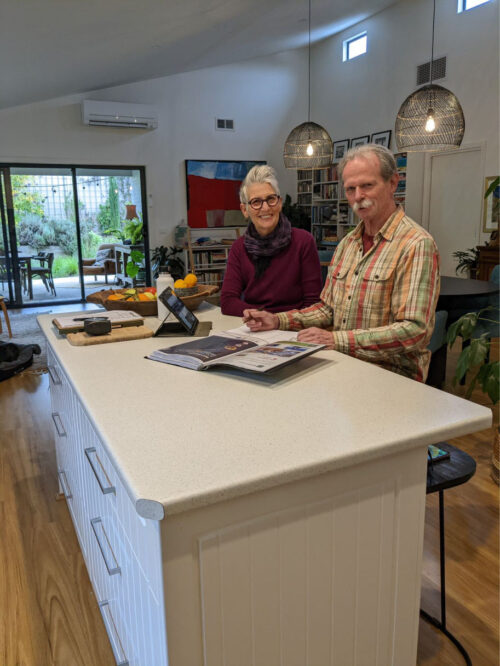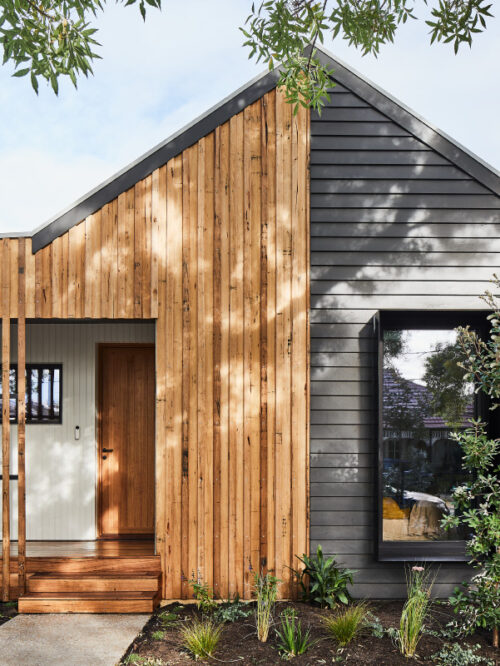CASE STUDY / See all
Whole of home: The benefits of a scorecard assessment


Laura and Simon from the ACT took advantage of government rebates and thermal assessments to help them to make their home more comfortable and sustainable.
After the first winter in their forever home in the leafy inner northern suburbs of Canberra, Laura and Simon knew their beloved 1960’s ex-‘govie’ house (known colloquially since it was built for public servants) would need some major energy efficiency improvements. Though theirs is not oriented terribly for winter sun, these houses are often notoriously cold with a lack of insulation, single glazed windows and are often draughty. Laura and Simon knew that the old, ducted gas system meant they would be held ransom by the rapidly rising gas prices. Their home is not unusual and is an example of the more than eight million out of Australia’s 10 million homes that are inefficient, largely because they were built before mandatory minimum energy efficiency requirements were put in place.
Laura, a public servant for the Department of Climate Change, Energy, the Environment and Water, and Simon, a documentary film and podcast producer, bought their home 2 years ago, just as the ACT government rolled out its Make The Switch campaign and launched a series of rebates and loans to support the scheme. Laura says that having young children, alongside the growing awareness of the harms caused by gas stoves (and dusty ducted heating) in the home, was enough of a reason to think about slowly getting rid of their gas appliances, but once they received their first $1200 winter gas bill, they needed to move quicker.
Hearing about local sustainable architecture firm, Light House Architecture and Science who undertake thermal modelling assessments, they decided that would be the first point of action. As part of their science services, the firm uses BERSPro to analyse the thermal performance of a home’s design and construction. Generating a report for the homeowners, this software allows precise modelling and calculating the heating and cooling energy required to maintain comfortable temperatures all year round. Modelling showed that with certain upgrades, starting with basic energy efficiency measures such as sealing draughts, putting in insulation and closing air gaps, they could begin to make their home more comfortable, particularly in the icy Canberran winters. Laura says that just from those basic improvements, they increased their residual loungeroom temperature from 8deg to 14 (on a few chilly days when their ducted heating had stopped working).
The modelling report told Laura and Simon that if they began with minor investments, they could go from 2.4 NatHERS rating to a 5.9 by sealing gaps and insulation, with the potential saving of $26k over ten years and $58k over 20 years in gas and electricity. Once that was put into perspective, the couple looked to take up the interest-free loans offered by the ACT government to make the more significant appliance investments.
“You can see that you’re saving money over time, but you know that the outlay is going to hurt too,” says Laura. Starting with replacing their ageing gas heater with a reverse-cycle air conditioner, they knew that their coming bills would start to be significantly reduced. (Their most recent electricity bill in May 2023 was $300, the equivalent of a one-person home.) Following up with an induction stove to replace the old gas oven, the couple finally put in a heat pump and have now had their home capped at the meter in March this year.
Apart from bill shock, Laura says they knew that health and the environment were the two major drivers that led them to move quicker than they might have. They also know they’re not done and will continue to look to make improvements such as finishing off the household double glazing once they can afford it. Recognising too that the offer of interest free loans meant they could start to action the changes that might have taken years to realise without the benefit of having the money upfront that they could pay off later, rather than paying higher bills for longer. They also recognise that because the ACT has been a leader in encouraging households to take on energy efficiency as a priority, it has created an environment where people have started taking an interest in what Laura and Simon are doing, and how they have done it. For this family, taking advantage of government rebates and thermal assessments has helped their wood-framed concrete-render home far more comfortable and sustainable.
At a glance:
SIZE: The block is 562 m2, the house is 96m2 (with a 22m2 studio).
HOT WATER : Sanden Heat pump
ACTIVE HEATING & COOLING : Daikin Alira split system reverse cycle air conditioner in lounge room and master bedroom, plus an oil heater in our four-year old’s room.
BUILDING MATERIALS: Wood frame with concrete tiles and concrete render.
WINDOWS & GLAZING : Double glazed windows in two bedrooms and bathroom.










